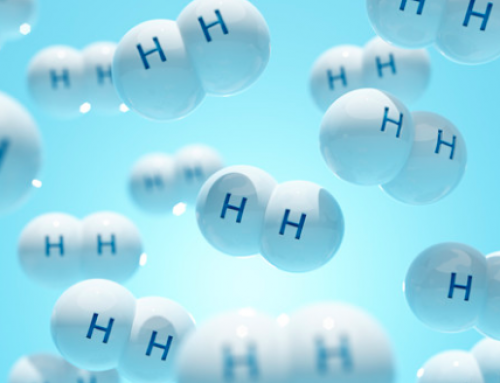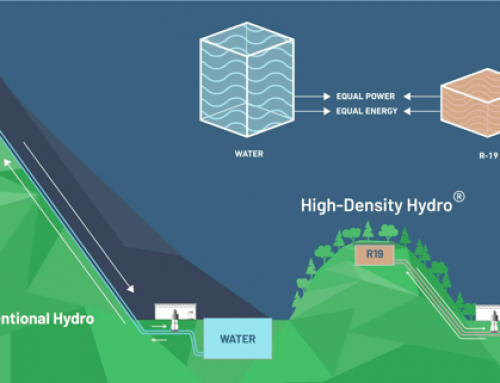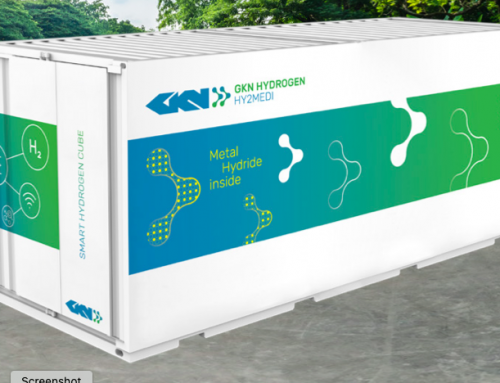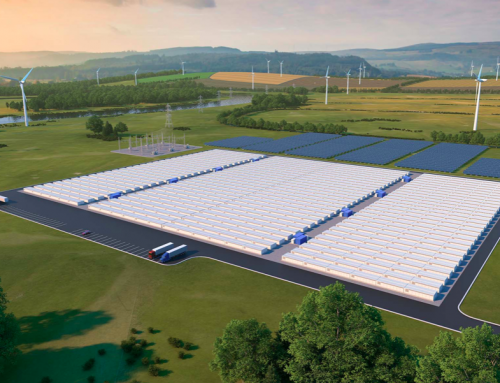By Julian Singer
Ambri, a Massachusetts-based company founded by researchers at MIT, has designed a battery that is a promising contender for storing electricity. It is a liquid metal battery, which initially consists of solid Calcium and Antimony electrodes separated by Calcium Chloride (a type of salt). These elements are all readily and cheaply available and are all recyclable. However Antimony, which is mainly used for flame retarders, ranks high on the list of strategically critical elements, with the largest reserves and current production in China and Russia.
In operation the battery is heated to 5000C so as to melt and mix the components. On applying electricity the Calcium and Antimony separate and build up on the two electrodes where they remain when the current is removed (this is the same process as electroplating). On discharge, and while still molten, the two ions combine to form an alloy, at the same time releasing electrons and heat energy. The response time is less than half a second.
During the cycle the battery loses no more than 20 per cent of the electrical energy (in other words it is 80 per cent efficient). This is slightly more than the 10 to 15 per cent of a Lithium-ion battery. Given the high temperature that the battery needs to run at, one might expect a lot more energy to be lost. However, once it has been raised initially to 5000C by external heaters it is held at that temperature by the heat released during charge and discharge, providing it is cycled relatively often and is held in a well-insulated container. All batteries produce heat, but in this case the heat is useful. The problem with Lithium-ion batteries is the opposite: if they are stacked in large numbers for energy storage they need to be cooled, thereby adding to the operational cost.

Assembling the Ambri battery. The final container is expected to be 10 ft square. (www.ambri.com)
The battery was developed at MIT by Professor Donald Sadoway and his students, especially David Bradwell. They formed Ambri in 2010 and since then have worked to find the best materials for the liquid metal technique. They claim that the capital cost of their battery on production will be 25 to 50 per cent of Lithium-ion and, unlike the latter, will not degrade with time. It is also safer to transport and operate. During transport the battery is cold and hence inert, while during operation no gases are released. Extreme situations such as short-circuiting the battery, deep discharge or overcharging do not cause problems.
The Ambri battery is not intended to be used in cars or phones so, although it is relatively compact, there is no need to have a low energy density. Unlike many other storage solutions, there are no moving parts and hence no maintenance. Based on repeated cycling in the lab the company claims a lifetime of 20 plus years, but this still needs to be proved in practice. One limitation is the maximum storage time, arising from the need to fully cycle the battery at least every two days. Longer times are possible but then some of the stored energy will be needed for heating, reducing efficiency. This limit should not be a problem for solar installations but could be for other sources.
Ambri have secured $144 million to build production plants with substantial support from Bill Gates, India’s Reliance Industries and Japan Energy Fund, among others. At present the company is building trial systems of 40kWh capacity. The first one is to be installed by the end of 2021 at a data centre in Nevada that will be powered by solar panels. It is particularly well suited to the hot desert climate.
In 2022 Ambri plans to certify and deploy a 1 MWh system, which will be its basic commercial unit. In 2023 it hopes to ship 250 of such units. This is a very ambitious schedule for building up production lines, supply chains and manufacturing partners. It is only conceivable because the battery is not only much simpler to build than Lithium-ion, but does not require especially pure or rare ingredients.
During this time, we will learn whether the battery lives up to the many attractive claims on cost, safety, efficiency, non-degradation and zero maintenance.





